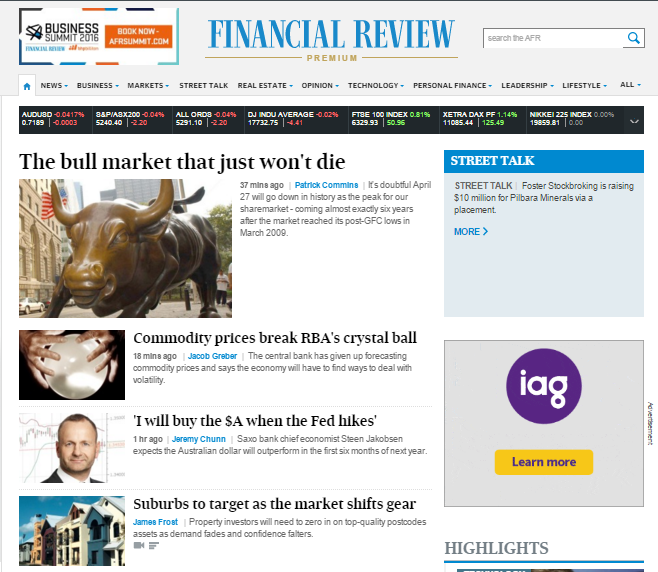
What a line up of shite! On stocks:
Will April 27 go down in history as the peak for our sharemarket? The timing would be too cute – coming almost exactly six years after the market reached its post-GFC lows in March 2009.
I doubt it.
Take this recent correction on the ASX; the best performers have generally been the same stocks that have made all the running over the past five years, points out Garth Rossler, chief investment officer at Maple-Brown Abbott. Sectors such as healthcare, infrastructure, listed property and quality industrials, especially those with offshore earnings, are even more expensive against the market than they were earlier this year – and that’s after a 13 per cent fall in the ASX 200.
There’s a good chance that the S&P500 will rise to new highs next year as it deludes itself that it’s not heading into an economic winter with the tightening cycle but I’d be prepared to bet long that we’ve seen the top here. Banks and resources are the only stocks that can get us back to 6000 points and with iron ore still falling all next year and property stalled if it not falling at home there’s little hope of it. By the time the RBA cuts again, which ought to boost bank stocks, the cycle is likely to have turned decisively negative so any rally will be fleeting. In short, sell rallies.
On the dollar, comes Saxo Bank chief economist Steen Jakobsen:
The Communist Party’s Silk Road initiative will put $US3 trillion into credit facilitation and a lot of that will be spent on infrastructure. The demand for raw materials will be met by supply from Australia.
“The Australian dollar looks cheap if you believe China is going to do better than expected, which I do,” Jakobsen said. “And it looks cheap if you think the Federal Reserve hike cycle at least initially will lead to a weaker [US] dollar – then the Australian dollar becomes extremely attractive at US70¢.”
…He has good news for anyone whose portfolio is loaded with resources and energy stocks. “The low in the commodities cycle in my opinion will be tied very closely to the first Fed hike,” he said. “We’re very close to the low of the commodities cycle.”
OBOR is sizable but it faces all sorts of problems. It’s nothing like the deployment of previous stimulus across a single nation. It is a mind boggling array of infrastructure initiatives across some of the world’s most opaque and unstable states. Yes, money helps stabilise things but not that much! The likelihood is that it will not be enough to offset the ongoing housing market construction crunch in China itself and should be thought of as more ‘glide slope’.
As for the US dollar, yes, it could fall for a while, but previous episodes did not have the current set up with all other reserve currencies still printing money like mad men so it still looks bullish. As for commodities bottoming, if you say so!
On property, I already covered that this morning.
Is this cheer-leading really the best that our national business daily can do?

